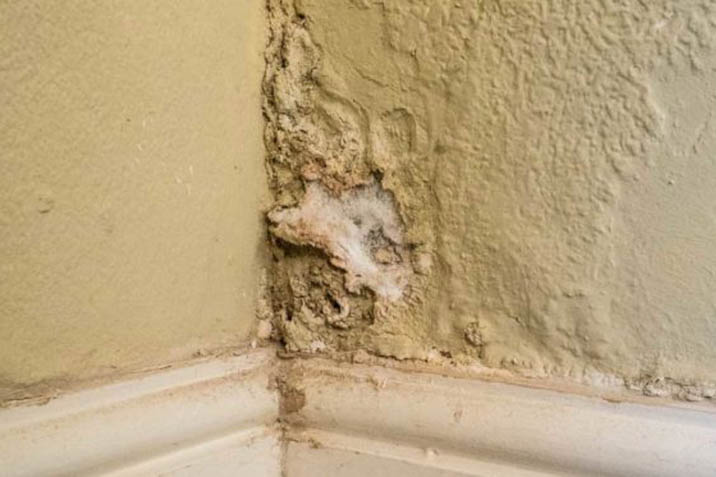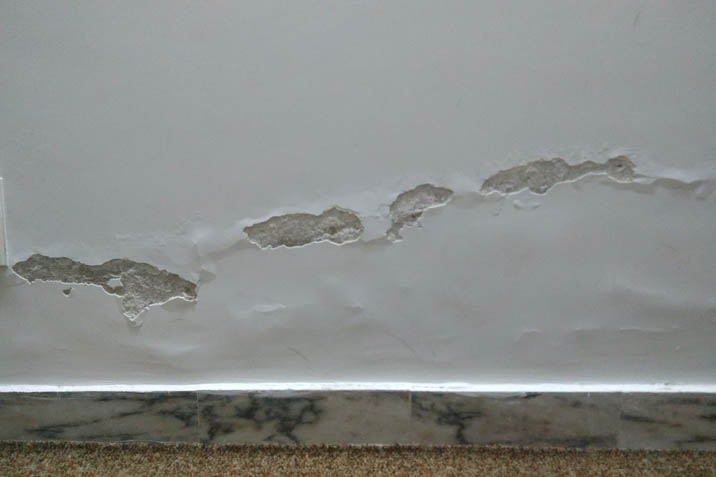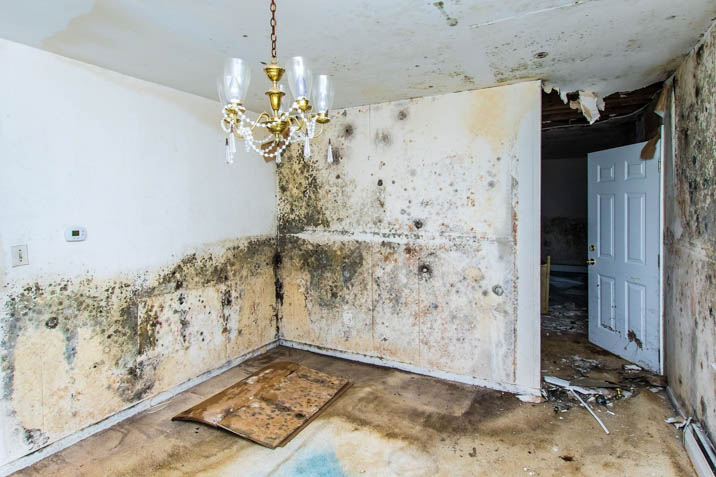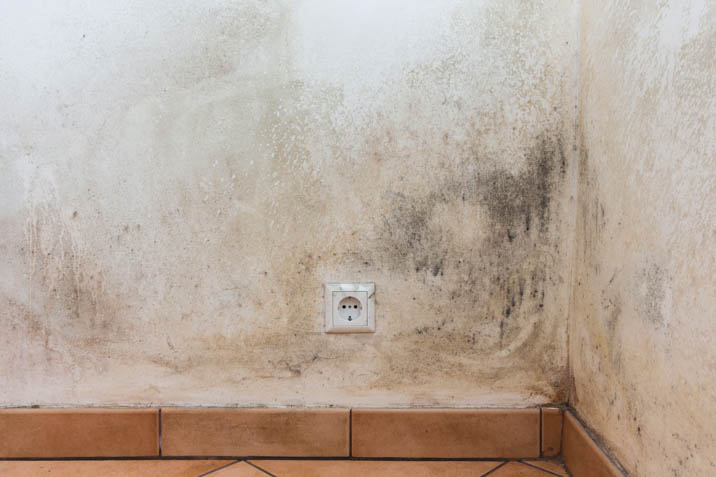What is rising damp?
Rising damp is a common problem for older buildings which occurs when moisture from under houses seeps upward into the internal walls. It is most common in homes with absorbent or porous materials such as brick or wood. Rising damp can also occur as a result of poor maintenance.
Preventing rising damp from ever occurring is obviously the ideal course of action. If this is impossible, it is crucial to treat rising damp as early as possible. Failure to treat rising ramp in time will lead to the walls and ceiling becoming compromised, resulting in wood rot and structural failure.
Another huge concern for rising damp is that it can cause mould, which creates a health risk for all of the home’s inhabitants. Common health effects of mould include irritation of the eyes, skin, throat, runny noses, and wheezing. Less often, exposure to mould can cause infections and damage to the lungs.
Am I at risk?
There are a few factors that will influence your likeliness of dealing with rising damp. Older buildings are much more susceptible. So are buildings made from porous materials such as timber and brick. Houses with a damaged proof course will also be much more likely to develop rising damp. Houses made from brickwork, slate and unprotected concrete are also vulnerable.
How to spot rising damp

Recognising rising damp as quickly as possible is important to making sure that you can begin treating it. Thankfully, rising damp is not hard to identify. Here are a few of the tell-tale signs.
1. Stains on the walls
This is the most obvious symptom of rising damp. If you can see moisture stains on the walls, you should be on high alert for rising damp. Check to make sure that it is not a leak from somewhere else – such as a heating appliance, plumbing leak or small hole in the roof.
2. Wallpapers flaking and falling away
The moisture of rising damp can erode the glue that holds wallpaper to the wall. If your wallpaper seems to be peeling off or losing shape, it could be the effects of rising damp.
3. Inexplicable smell
Rising damp will usually come with a musty smell. It will be hard to trace because it is behind the walls. If you can smell something heavy and musty but have no idea where it is coming from, it could be rising damp.
4. Deformed walls
Any kind of warping of the walls should have you on high alert – even if it seems to be only surface deep. This includes things like flaking plaster, bubbling paint, falling mortar and more. If you notice something on a larger scale – such as the shape of the walls having warped slightly – you should act immediately, leave the house, and have a specialist come to assess if the home is safe.
You should note that rising damp can often be misdiagnosed. It is commonly confused for condensation. The best way to differentiate is to compare moisture in samples taken from both deep within the wall and close to the surface – condensation will usually only permeate the surface, so samples from within the wall will still be dry.
How to stop rising damp?

Preventative measures are the best way to avoid problems of rising damp. These include ensuring that your house has proper ventilation, regrouting your tiles, reducing the moisture in the house (by drying clothes outside, wiping down the bathroom after every shower, and keeping the lid on saucepans when cooking), and using a dehumidifier.
Each of these measures can help to prevent rising damp from forming – but how to fix rising damp once it has taken hold? The good news is, there are treatments that can be quite effective at eradicating rising damp. The key is to make sure to apply them early (before any real damage sets in).
Rising damp solutions Australia: The most effective rising damp treatments

The number one treatment for rising damp is an chemical injection cream with damp proofing capabilities. Damp proofing cream is injected (or hand-pumped) into holes that have been drilled into the mortar joint.
The cream will then revert into a liquid which can penetrate the masonry and will provide a waterproofing/water repellent membrane. This barrier is known as a damp proof course (DPC) will line the capillaries in the substrate and control the rising damp. It be used in walls that are highly saturated with water.

Before injecting the cream, you must prepare the house internally and externally for the treatment. This means removing skirting boards, architraves, exposing brickwork, and disconnecting radiators. You should also remove any plaster that has been contaminated by the rising damp – if you see visible damage, you should hack the plaster away to at least a metre (and higher if there are signs of rising damp further up).
These tasks are labour-intensive and require a sound competency with building skills that will definitely be challenging for an inexperienced DIY-er. Make a realistic assessment of your skills before attempting to do this yourself. If you feel confident with the above instructions, doing it yourself could be a great way to cut costs. Remember also that you will be responsible for repairing the home after the DPC has been injected.

